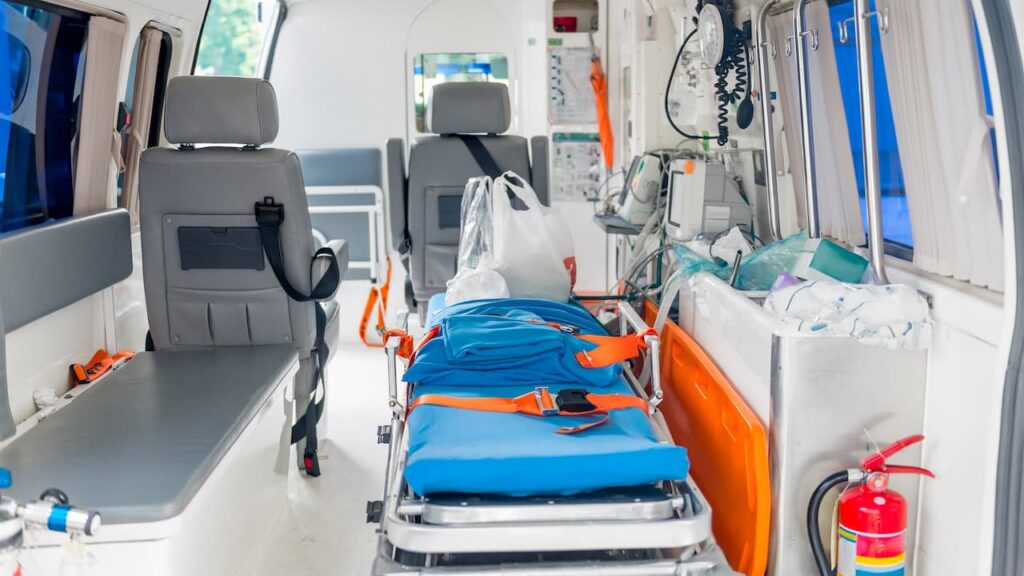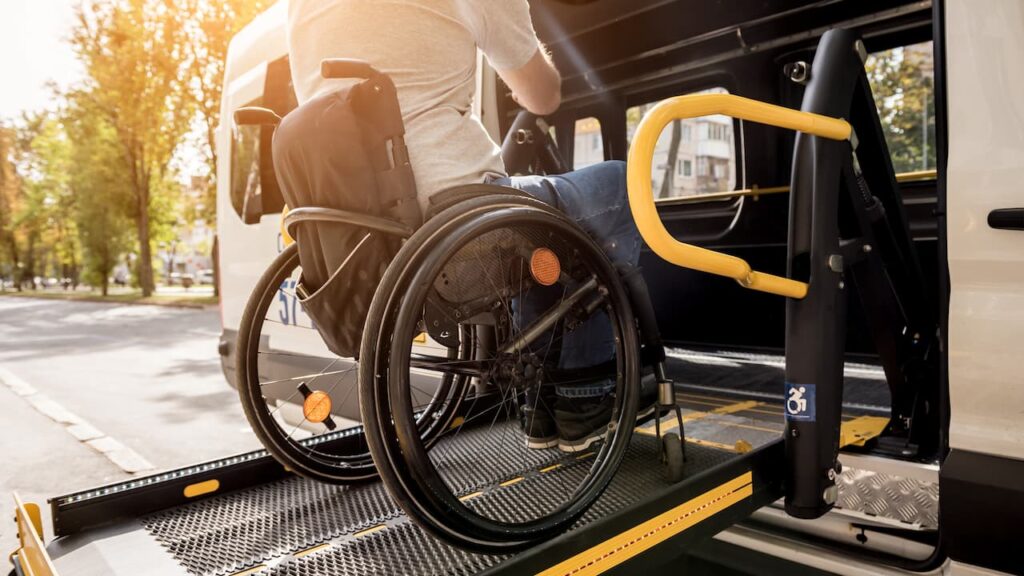When it comes to patient transportation, two terms often come up: ambulance and VDTD (Dedicated Patient Transport Vehicle). If you’ve ever wondered about the real differences between them, this article will clarify them for you.
Both vehicles have important functions in patient care, but they are quite different, both in their use and in the equipment they offer. Read on.
What are ambulances?
Ambulances, in simple terms, are vehicles specially equipped to transport patients. There are different types of ambulances, and each one is designed for specific situations.
In general, an ambulance is manned by at least two professionals who are qualified to provide medical care during transportation. These professionals can be, for example, emergency technicians or nurses, depending on the type of ambulance.
Types of ambulances
- Type A: these are transport ambulances, suitable for transporting patients who do not present an immediate health risk. Type A1, for example, transports one patient on a stretcher or in a wheelchair, while Type A2 can transport several patients and their companions
- Type B: known as emergency ambulances, they are equipped to transport patients in emergency situations, with the resources to provide immediate medical care
- Type C: these are intensive care ambulances, used to transport life-threatening patients who require advanced medical care during transportation, such as ventilation or intensive monitoring.
What are VDTDs?
Dedicated Patient Transport Vehicles (DPTVs) are light vehicles designed to transport patients in non-emergency situations. Unlike ambulances, DATVs are used to transport people who, although they need to be transported safely, do not require medical attention during the journey. They are common for transporting patients to appointments or examinations that do not involve immediate risk.

Image: inside an ambulance
Main differences between ambulances and VDTD
1. Function and type of patient
The main difference between an ambulance and a VDTD is the type of patient each carries.
- Ambulances are equipped to provide care during transportation
- VDTDs are intended for transporting patients whose medical conditions do not require medical attention during transportation.
In other words, ambulances are used for urgent and emergency situations, while VDTDs are used to transport patients who are not at imminent risk of death.
1. Function and type of patient
Ambulances: depending on the type, ambulances can have specialized equipment such as ventilation systems, monitors and medication. Emergency (Type B) or intensive care (Type C) ambulances are equipped with life-saving technologies and resources during transportation
VDTD: these are simpler in terms of equipment, as they don’t require the same medical care during transportation. These vehicles usually have ramps or elevators to facilitate access for patients in wheelchairs and are equipped with air conditioning to ensure comfort during the journey.
2. Crew
The crew of an ambulance is more qualified and has health professionals trained to provide care during transportation. For example, a Type B ambulance has at least two health professionals, while a Type C has a team made up of doctors and nurses.
In VDTDs, the crew is simpler: it usually consists of a driver trained in Basic Life Support, without the need for health professionals on board.
3. Licensing
Both types of vehicle need to be duly licensed and approved to ensure safe transportation.
Ambulances must undergo regular inspections and meet stricter requirements in terms of equipment and crew, given their role in providing healthcare.
VDTDs, although they also need certification, have less demanding requirements as they do not involve the provision of medical care during transportation.
When to use each one?
The choice between an ambulance and a VDTD always depends on the patient’s clinical situation:
- Ambulance: when the patient has a risky condition or needs medical attention during transportation, such as in urgent or emergency situations or when their health needs to be monitored.
- VDTD: when the patient is not at immediate risk and the transportation is for non-urgent situations, such as medical appointments or examinations.
Is it worth asking for a VDTD?
With our experience as a company specializing in transporting non-emergency patients, we know that, for many, getting to appointments, exams or treatments can be a real challenge. Discomfort, insecurity or simply worrying about transportation can make the journey even more difficult.
And this is where the VDTD stands out: the perfect solution for those who don’t need medical care during the journey, but don’t want to compromise on safe, comfortable transportation adapted to their needs.
Ambula VDTD: the right transport for your comfort and safety
At Ambula, we know that each patient has unique needs. That’s why we offer a specialized non-emergency patient transport service, ideal for those who need to be transported safely and comfortably, but without the need for medical care along the way. Whether for consultations, examinations or treatments, our vehicles are equipped to guarantee the patient’s well-being, with a trained team ready to offer the necessary support.
If you are looking for safe, comfortable and efficient transportation, Ambula is the right choice to take care of you or your loved ones on every journey. Contact us and find out how we can make your transportation easier and smoother!




